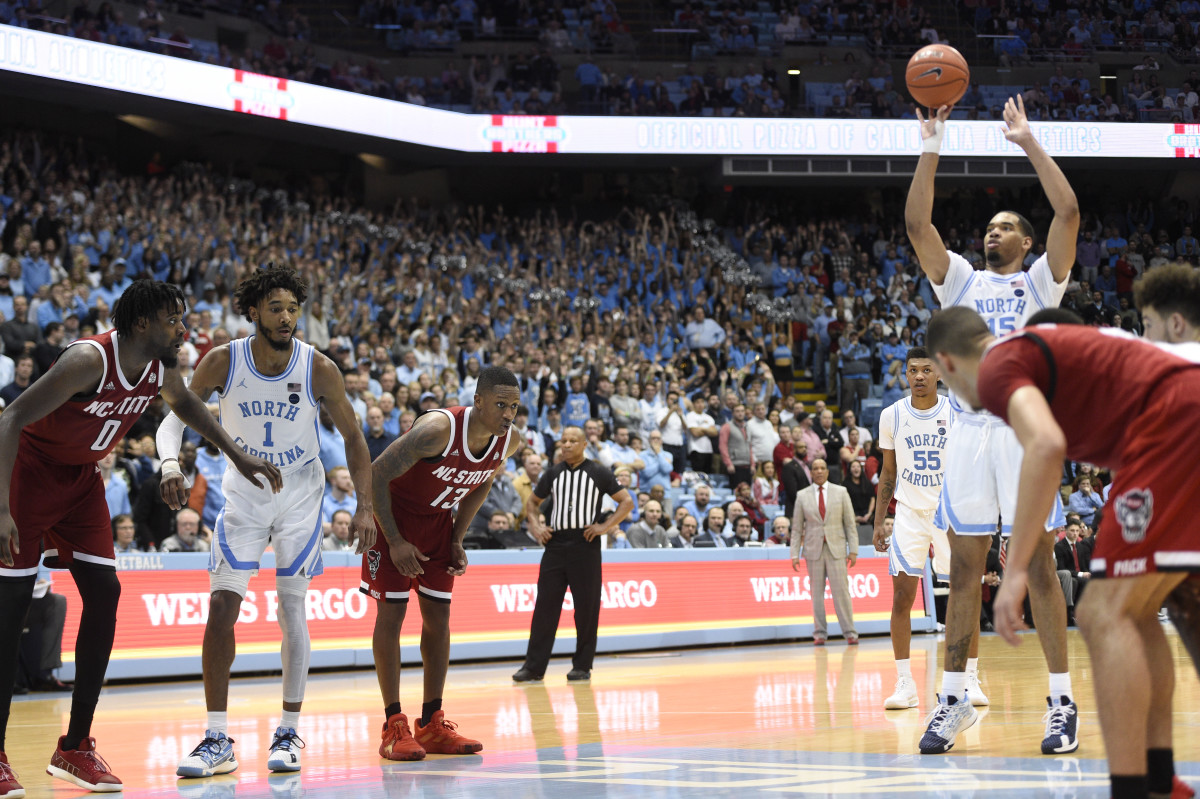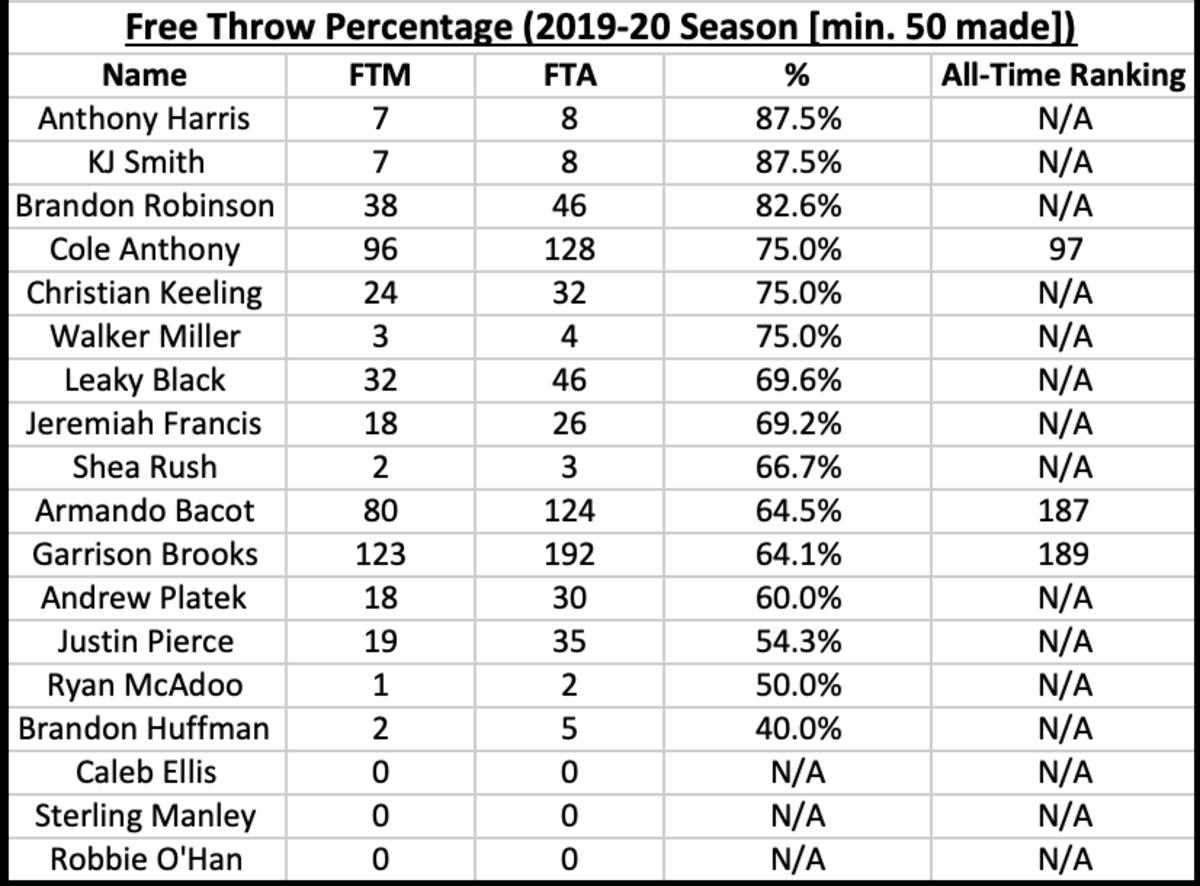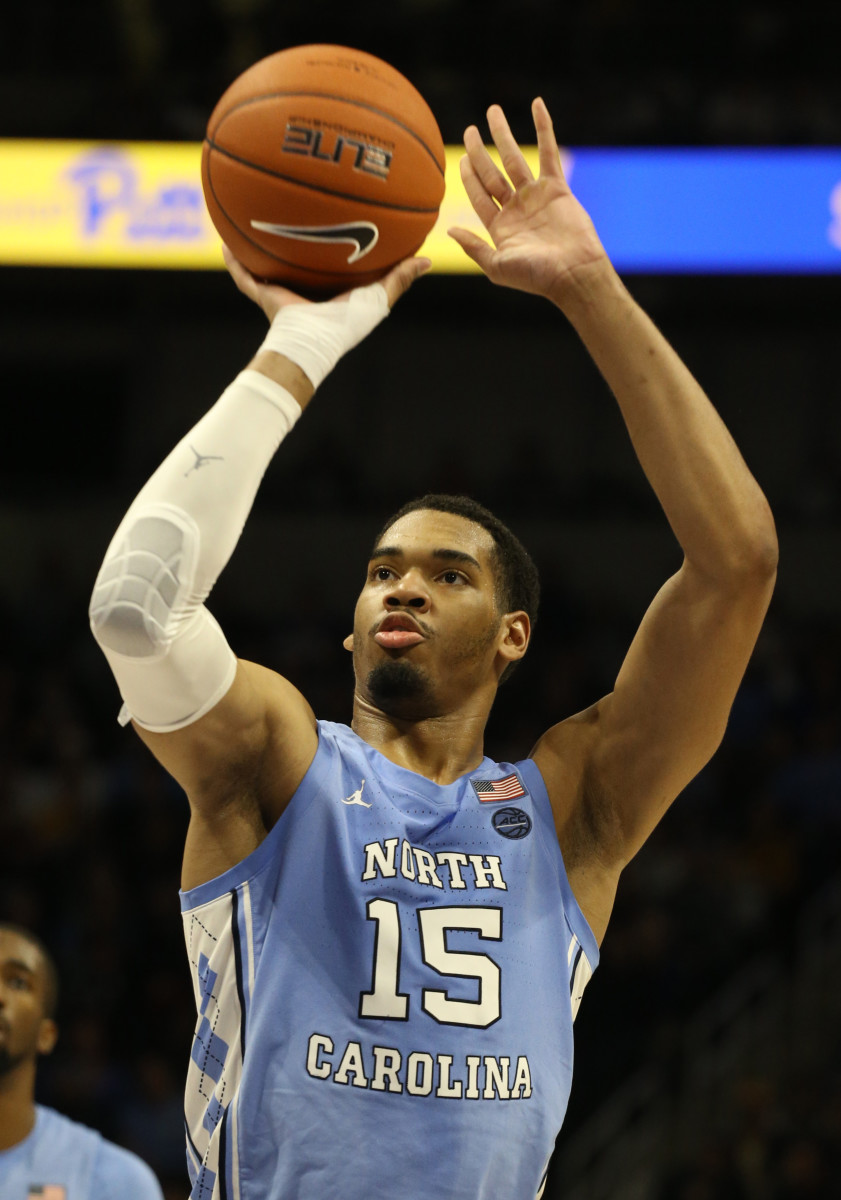UNC Basketball: 2019-20 Stats in Review - Free Throw Percentage
Come on, be honest: How many times have you said it from the comfort of your own La-Z-Boy while sipping a Coke and eating wings? How many times have you asked the question?
I know I have. Guilty as charged.
The frustrated bewilderment and inane muttering that follows goes a little something like this:
“Why in the world can’t he hit free throws?”
“It’s the easiest thing in the world. Nobody’s guarding him.”
“They ought to practice shooting free throws more often.”
“He must not be focused enough.”
“Oh good, all we have to do is hit our free throws down the stretch and we’ll win.”
It seems easy enough right? You have the opportunity to shoot the ball dead-on from 15 feet away. Your opponents are forced to be behind you or on either side of the lane.
Not so fast.
Shooting free throws, especially clutch free throws, are infinitely more difficult than Johnny Q. Basketball Fan realizes.
Regardless of the level of practice or focus, when the game is on the line, it’s a real challenge to drown everything out: The fans. Your inner thoughts. The repercussions if you miss. The excitement if you make them. The sprints you’ll have to run if you miss. Remembering every last part of your form. Thinking about tweaking your mechanics because you’ve been struggling lately. Should I shoot underhanded? That worked for the entire Barry clan. But I don’t want to look silly.
And sure, ideally we would love for every player to make all his free throws. But guess what?
If Justin Jackson had made his last free throw in the Elite Eight against Kentucky in 2017, there would have been no “Luke Maye shot”.
So missed free throws aren’t all bad, right?
Perhaps not, but when things go wrong because of missed free throws, it’s all the more painful.
Need proof? Ask John Calipari and the 2008 Memphis Tigers about the National Championship game. They went 1-for-5 in the final 75 seconds of regulation before Mario Chalmers’ three-pointer sent the game to overtime. From there, Kansas stole the National Championship out of the clutches of Calipari’s Tigers.
Or perhaps a little closer to home: The Tar Heels went 5-for-10 from the line in the final 71 seconds at home against Duke this year, allowing Tre Jones to perfectly miss a free throw, grab the rebound, and hit a shot to send the game to overtime. We won’t talk about what happened in those five minutes of extra game action.
All this to say: Free throws can be exhilarating. Free throws can be maddening. Free throws can make a player a hero. Free throws can make a player a goat.
They are a fun and exhilarating part of the game and can help a team steal (or miss out on) extra points. Let’s take a look at how the 2019-20 Tar Heels did from the free throw line.

Over the course of the next several weeks, I’ll be reviewing the stats from the 2019-20 North Carolina basketball team, one category at a time. We’ve already looked at total points, total rebounds, total assists, total three-pointers, total blocks, total steals, and field goal percentage. We move today to free throw percentage.
As a reminder: while these stats won’t tell the whole story of the season, they will help provide context and insight for both the present and historical context.
The following chart lists each player, their free throw percentage for the season, and where they ranked in the Carolina history books for free throw percentage in a single season (for those who achieved the minimum threshold of 50 made free throws).

Observations
- The Tar Heels made 470 free throws to their opponents 440. That means Carolina has outscored their opponents from the free throw line in 16 of the 17 years Roy Williams has been in Chapel Hill (2014-15 is the lone exception - opponents hit 591 and Carolina hit 571).
- As logically follows, 2014-15 was also the only year of the Roy Williams era when the Heels had fewer attempts than their opponents (814 for Carolina, 843 for opponents).
- Only three players on the team (Cole Anthony, Armando Bacot, and Garrison Brooks) qualified for the requisite 50 made free throws for their percentages to be counted on the all-time single season list.
- For comparison’s sake, this is the first time since 2005-06 that at least five different players didn’t made 50 free throws. Tyler Hansbrough and Reyshawn Terry were the only players to do so that season.
- In the Roy Williams era, 2005-06 and 2019-20 are the only two seasons with fewer than four players making 50 free throws.
- Add 2003-04 to that list and those are the only three seasons in which fewer than five players made 50 free throws in the Roy Williams era.
- Of the three qualifying candidates, Cole Anthony led the team with a 75.0 (96-for-128) free throw percentage.
- Brandon Robinson came into the season as a career 66.7 percent free throw shooter. He increased his career average by nearly seven percentage points (up to 73.6 percent) by shooting a career high 82.6 percent on the season.
- Robinson’s 82.6 percent was up 11 percentage points from his previous single season high (71.4 percent in 2017-18) and up just shy of 20 percentage points from the previous year (63.2 percent in 2018-19).
- Had Robinson made enough free throws to qualify (he made 38) and maintained the same percentage, he would have ranked 28th all-time in a single season for Carolina. Injuries obviously had a lot to do with that total being under the threshold.
- In his limited court time, Anthony Harris shot 87.5 percent from the free throw line. Of course, that number represents an extremely low sample size (7-for-8) over the course of just five games played. Hopefully, Harris can shoot something even remotely close to that number in 2020-21.
- Garrison Brooks was the only player to make 100+ free throws (123-for-192, 64.1 percent).
- As a team, Carolina made 470 free throws in 2019-20. The only other time a Roy Williams-coached Carolina team has made fewer than 500 was in 2013, when they made 442.
- As a team, Carolina had 689 free throw attempts. 2012-13 (655) and 2017-18 (677) are the only other Roy Williams-era teams to attempt fewer than 700 for the season.
- As a team, Carolina shot a percentage of 68.2. This was the seventh time in the Roy Williams era that the Tar Heels have shot sub-70 percent. The others were Roy Williams' first year back in Chapel Hill (2003-04) and a string of five years from 2009-10 through 2013-14.
- In a statistical anomaly (and as a complete joke), Andrew Platek will probably shoot either exactly 40 or 80 percent in his senior year. He has shot precisely 70.0 percent (7-for-10), 50.0 percent (2-for-4), and 60.0 percent (18-for-30) in his first three years. Here’s hoping for 80!

Conclusions
Numbers and stats don’t tell the whole story, but they do help tell the story. So what story do these numbers help tell?
Percentage-wise, the 2019-20 Tar Heels were just south of the middle of Roy Williams-era Carolina teams. Six teams have shot a worse percentage, meaning that 10 have shot a higher percentage. Unfortunately, with the attempts and makes down at the very bottom of the Williams era, the free throw line was not the overwhelming strength it usually is for the Tar Heels.
In fact, that has been true not just this year, but for several years running. Roy Williams says that his goal is to make more free throws than the opponent attempts. The Tar Heels achieved this in six of his first nine years in Chapel, but have fallen short now in eight straight seasons. Hopefully, the forecasting of a strong front line will help a return to a dominant free throw line performance in 2020-21.
Garrison Brooks and Armando Bacot are the two most prolific returning free throw shooters on the team. Each attempted more than 100 free throws, but unfortunately each shot sub-65 percent from the free throw line. In order for the 2020-21 Tar Heels to assert the dominance they hope to inside, it will be integral that the returning front court players get their percentages up into the 70s.
Another complicating factor is that Carolina’s other returning starter (Leaky Black) also shot a sub-70 percentage from the free throw line (although he was right on the verge with 69.6 percent).
Each of the three returning starters will need to take a step forward from the free throw line to help set an example for the rest of the team in 2020-21. With four of the six scholarship freshmen coming in as guards or wings, you would also expect higher free throw percentages out of them.
Will free throws bring joy or agony to Carolina in 2020-21? Only time will tell.
We continue in our series of examining the 2019-20 UNC stats on Tuesday, June 16. Next up: Points Per Game.
You can follow us for future coverage by clicking “Follow” on the top right hand corner of the page.
Send Isaac Schade an email to talk more about this article.
Follow us on Twitter: @SI_Heels | @isaacschade
Please post any comments below!
